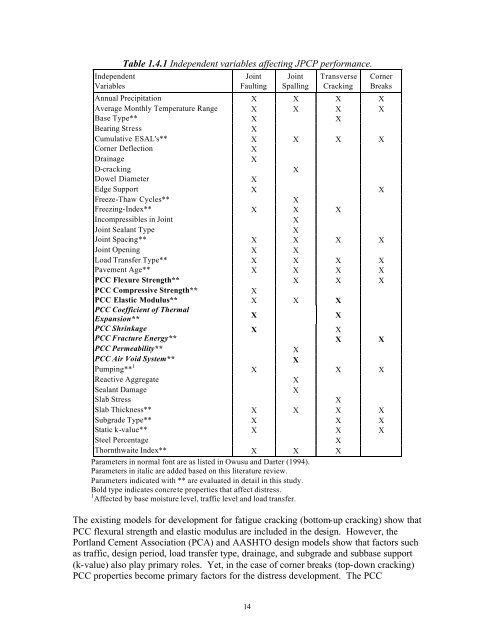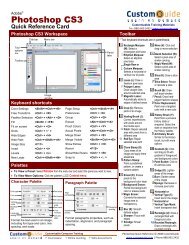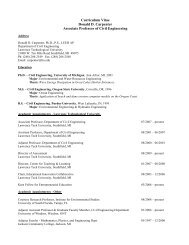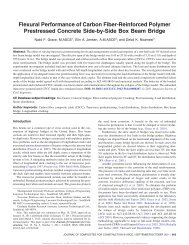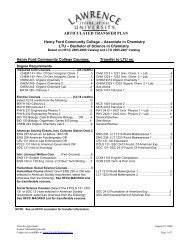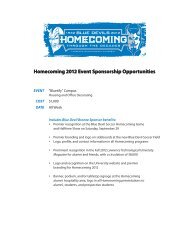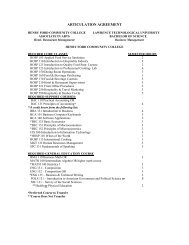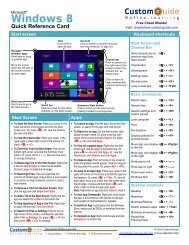The Effects of Higher Strength and Associated Concrete Properties ...
The Effects of Higher Strength and Associated Concrete Properties ...
The Effects of Higher Strength and Associated Concrete Properties ...
Create successful ePaper yourself
Turn your PDF publications into a flip-book with our unique Google optimized e-Paper software.
Independent<br />
Variables<br />
Table 1.4.1 Independent variables affecting JPCP performance.<br />
Joint<br />
Faulting<br />
Joint<br />
Spalling<br />
Transverse<br />
Cracking<br />
Corner<br />
Breaks<br />
Annual Precipitation X X X X<br />
Average Monthly Temperature Range X X X X<br />
Base Type** X X<br />
Bearing Stress<br />
X<br />
Cumulative ESAL's** X X X X<br />
Corner Deflection<br />
X<br />
Drainage<br />
X<br />
D-cracking<br />
X<br />
Dowel Diameter<br />
X<br />
Edge Support X X<br />
Freeze-Thaw Cycles**<br />
X<br />
Freezing-Index** X X X<br />
Incompressibles in Joint<br />
X<br />
Joint Sealant Type<br />
X<br />
Joint Spacing** X X X X<br />
Joint Opening X X<br />
Load Transfer Type** X X X X<br />
Pavement Age** X X X X<br />
PCC Flexure <strong>Strength</strong>** X X X<br />
PCC Compressive <strong>Strength</strong>**<br />
X<br />
PCC Elastic Modulus** X X X<br />
PCC Coefficient <strong>of</strong> <strong>The</strong>rmal<br />
Expansion**<br />
X<br />
X<br />
PCC Shrinkage X X<br />
PCC Fracture Energy** X X<br />
PCC Permeability**<br />
X<br />
PCC Air Void System**<br />
X<br />
Pumping** 1 X X X<br />
Reactive Aggregate<br />
X<br />
Sealant Damage<br />
X<br />
Slab Stress<br />
X<br />
Slab Thickness** X X X X<br />
Subgrade Type** X X X<br />
Static k-value** X X X<br />
Steel Percentage<br />
X<br />
Thornthwaite Index** X X X<br />
Parameters in normal font are as listed in Owusu <strong>and</strong> Darter (1994).<br />
Parameters in italic are added based on this literature review.<br />
Parameters indicated with ** are evaluated in detail in this study.<br />
Bold type indicates concrete properties that affect distress.<br />
1 Affected by base moisture level, traffic level <strong>and</strong> load transfer.<br />
<strong>The</strong> existing models for development for fatigue cracking (bottom-up cracking) show that<br />
PCC flexural strength <strong>and</strong> elastic modulus are included in the design. However, the<br />
Portl<strong>and</strong> Cement Association (PCA) <strong>and</strong> AASHTO design models show that factors such<br />
as traffic, design period, load transfer type, drainage, <strong>and</strong> subgrade <strong>and</strong> subbase support<br />
(k-value) also play primary roles. Yet, in the case <strong>of</strong> corner breaks (top-down cracking)<br />
PCC properties become primary factors for the distress development. <strong>The</strong> PCC<br />
14


